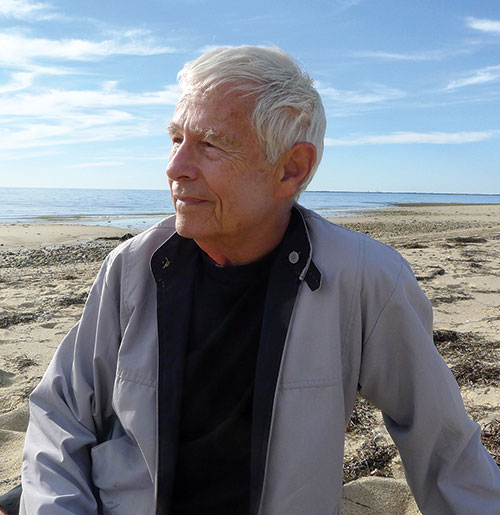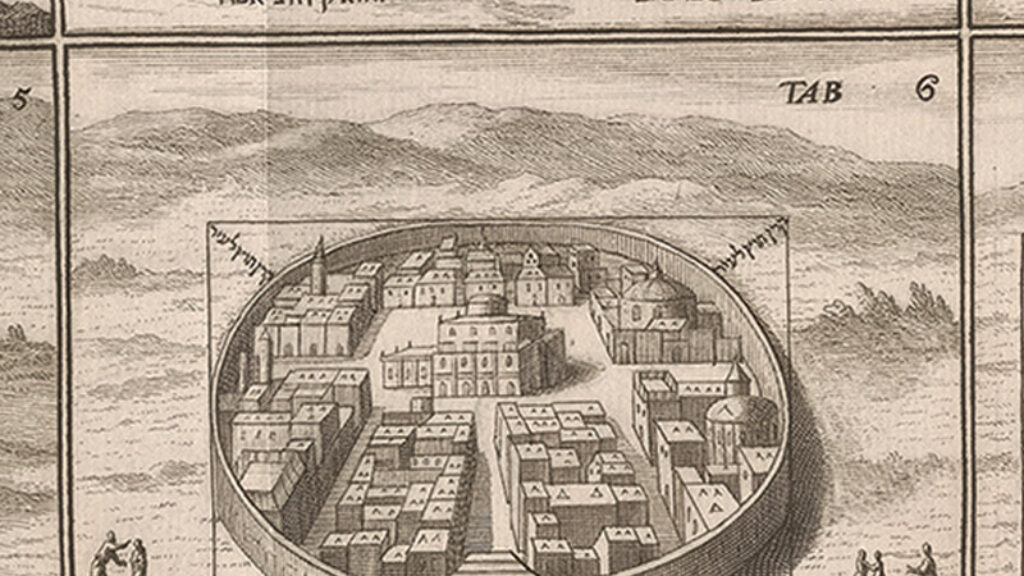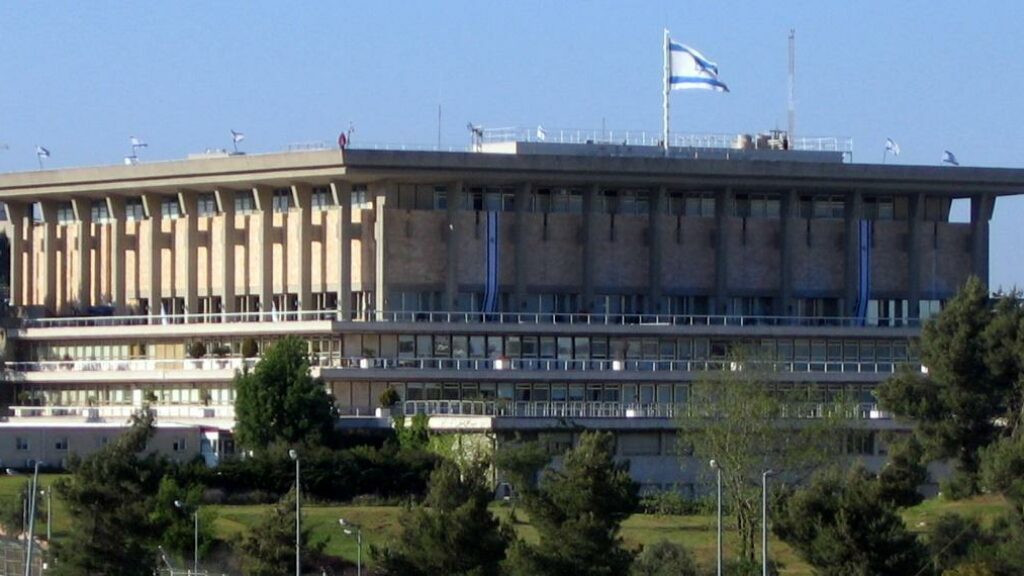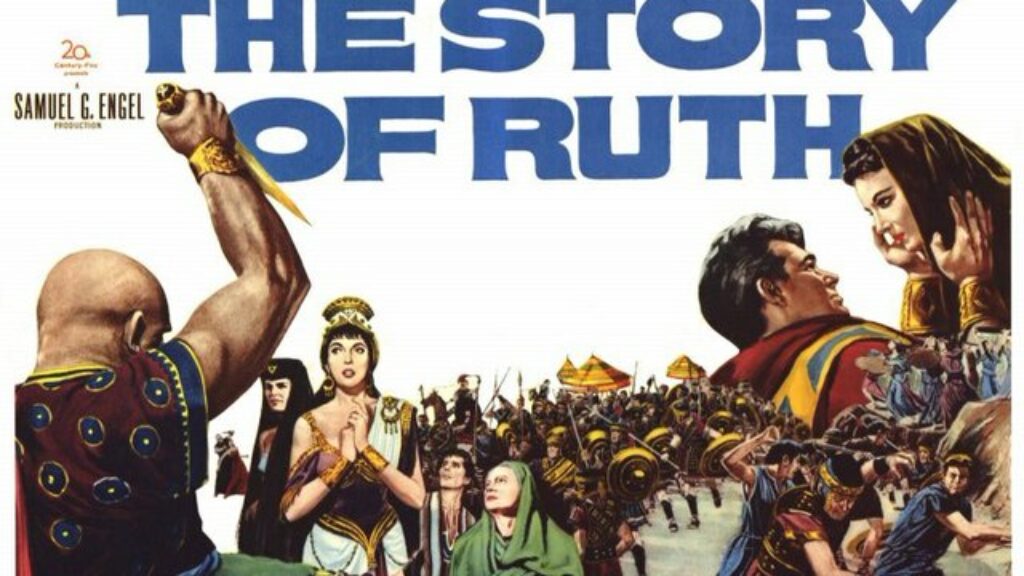Touch: Passover under COVID-19
What a time for the commemoration and celebration of freedom! Passover at a time of plague. We’ve been living virtual lives while longing for freedom from a place of constriction. Many have mentioned E. M. Forster’s famous epigraph to Howard’s End: “Only connect. . .” but I think also of a less well-known story he wrote over a century ago, “The Machine Stops.”
In Forster’s dystopia, a mechanical, cerebral world, humans live separately from one another, underground, each in their own cubicle, connected by a kind of video hook up. Food is ordered and comes to a window of the cubicle. Sound familiar?
The Machine runs everything. A few people try to go above ground without permission to live full human lives. Of course, bodies aren’t prepared physically; their muscles, their lungs, aren’t developed. Up on the surface of the Earth, they die. Individuals communicate, shop, visit virtually through the Machine. In Forster’s story, “Vashti was seized with the terror of direct experience.” Her son asks her to visit him. People can sometimes visit via airship, but it’s rare. Why bother? They can’t, don’t want, to touch. The protagonist, Kuno, tells his mother that the Machine has robbed people of the sense of touch. Life under the Machine is slavery to a false god.
Then the Machine sputters and stops. No one is prepared: “They were dying by hundreds out in the dark.” But for a few others who risk freedom, there is at least the imagining of what might, for future generations, be a real human life up on the surface of the Earth.
The story feels prescient. But in our present pandemic, our virtual work-arounds (FaceTime, Zoom) are our partial saviors. They will even help some of us have some semblance of a family seder. These solutions are creative; I wouldn’t want to do without them. But as metaphor, they make me uneasy. We, like the people in Forster’s fantasy, cannot touch.
Well, it makes sense not to touch during a pandemic. We’re lucky we can depend on technology, on virtual existence. But for years, increasingly, well before the pandemic, we’ve been connecting virtually. We’re connected . . . and not connected. Long before the pandemic, we had become suspicious of touch. Yes, friends hug hello or goodbye. But touch is guarded against, worrisome, a possible prelude to assault. Holding our mobile phones, we wait for a train or a meal, stare, and do the dance of thumbs. Eyes don’t meet.
In Forster’s story, the narrator says, “people never touched one another. The custom had become obsolete owing to the Machine.” We have, for a few decades now, created avatars living happy, full lives. We’ve invented these happy social media selves, our smiling pictures assuring each other that our fabrication isn’t fabrication.
Our complicated machine has now stopped. We shelter in place against a virus no one has immunity to. We stand six feet apart and protect ourselves behind masks. I’m not criticizing these things—they’re necessary. Under attack by COVID-19, we have to live this way—with masks, avatars, virtual connections, separation, the absence of human touch. Still, as metaphor, as synecdoche or metonymy, these images reveal us living unreal lives, imitation lives. Masks are metaphor for the falsity of the ego—for hiding our deeper selves from one another; touch is synecdoche for full emotional and intellectual contact. And we disinfect—metonymy for our desire for a purified life.

There is a kind of poem out there, beyond our solitary rooms and screens. It’s creating images everywhere—images of separation, of masks, of a hunger to touch. Of breath. A poem of pneumonia, of being unable to take in breath. Of an unreal life. But also, a life of real courage—doctors, nurses, and others risking their lives on behalf of the wounded and the dying. This poem, describing our lives and a longing to live, has gone viral, is viral.
Was there a time in the past when we really expressed our lives fully, when we didn’t have to hide or falsify? When we really touched? Not likely. But the poem is a teacher. The biblical word for Egypt is “Mitzrayim,” which, through rabbinic wordplay, has been associated with a narrow or constricted space. When we’re released from this new Mitzrayim, will we listen to the poem? Will we touch?
Comments
You must log in to comment Log In
Suggested Reading

Mysterious Mishnah
According to a midrash, God will tell the contending nations: “He who possesses my mystery—he is my son.” And when they ask “What is your mystery?” God will reply, “It is the Mishnah.” How do you translate a mystery?

Jeremiah, Ben-Gurion, and Hillel Halkin
In one of David Ben-Gurion’s last addresses on the Bible, an essay entitled “The Monarchy and the Prophethood” delivered in October, 1968, the old, former prime minister meditated on Yehuda…

Where She Has Gone
The book of Ruth has inspired Oscar-winning films, medieval kabbalists, rugged kibbutzniks, and gifted artists. What is it about this book that makes it so engaging?

Dateline Zion
"Jewish law does not go forth from London, and so rabbinic authorities have long attempted to define a Jewish date line."
Jerome Marcus
A lovely and inspiring piece. Thank you very much.
One quibble: it's no mere Rabbinic wordplay that reads Mitzraim as a land of constraints. Verse 5 of Psalm 118 gives us David's cry: מן המצר קראתי יה ענני במרחב יה -- "Out of my straits, "the old JPS translation has it, "I called upon the Lord." מצרים are constraints, limitations, binding restrictions. Same word, just different vocalization.
So Mitzraim means land of constraints, land of restrictions. But Pharoah, the king of Egypt is himself ungoverned: in Exodus 32, when Moses confronts his brother Aaron and the Jews worshiping the Golden Calf, the Torah tells us:
וירא משה את העם כי פרע הוא כע פרעה אהרון לשמצה בקמיהם
Moses saw that the people were broken loose (the new Koren translation says it in 21st century English: they were "out of control") for Aaron had let them loose
A king who recognizes no force, earthly or otherwise, that can govern him is out of control. A country in which people are subject to such a king is a land of constraints, ultimately a land of slavery, a place where there is no freedom.
As a nutshell description of what we're supposed to learn on the holiday of Pesach, this is not a bad start.